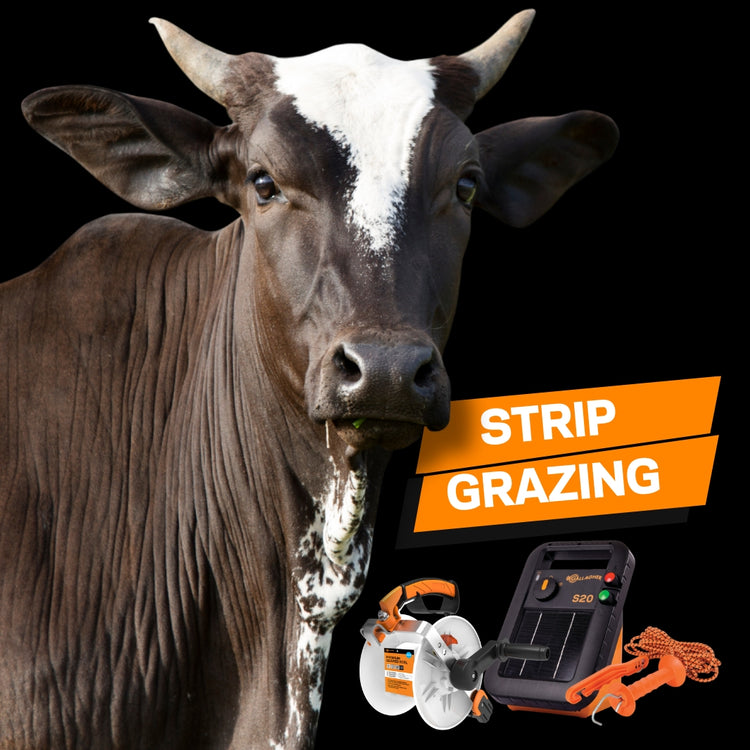Easily Manage your Pastures with Strip Grazing

Strip grazing is a livestock management practice where a pasture is divided into strips, and animals are allowed to graze one strip at a time. This method can be effective for optimizing pasture usage, improving animal health, and enhancing soil fertility. This method ensures that animals have continuous access to fresh grass while promoting healthier pasture growth. Here's a closer look at how it works.
First, the pasture is divided into strips using temporary fencing. Movable fences are particularly useful because they allow easy adjustment of strip size based on livestock needs and pasture conditions. Livestock are then allowed to graze one strip at a time, typically for a few days. After this period, they are moved to the next strip. This rotation means animals always have access to fresh feed, while the strips they’ve left behind have time to recover and regrow. This rotational approach ensures the pasture is never overgrazed, maintaining its productivity.
The benefits of strip grazing are numerous. One major advantage is efficient feed use. Animals graze more evenly, reducing waste and preventing overgrazing. This method also helps in maintaining a continuous supply of fresh grass, as pasture regrowth is optimized. For the livestock, this means a steady diet of high-quality feed, which supports better health and growth. Furthermore, the consistent availability of fresh grass minimizes the need for supplementary feeding, reducing feed costs.
In addition to enhancing animal health, strip grazing also promotes soil health. Manure is spread more evenly across the pasture, enriching the soil with essential nutrients. This even distribution helps improve soil fertility over time. Moreover, maintaining plant cover through controlled grazing helps prevent soil erosion, contributing to long-term soil quality and sustainability.
While strip grazing offers many advantages, it does require careful planning and management. Regular movement of fencing and livestock increases labor and demands diligent monitoring of pasture regrowth and livestock needs. Initial setup costs for temporary fencing and water systems can be significant, but these expenses are often offset by the benefits of improved pasture utilization and livestock productivity.
If you’re considering implementing strip grazing on your farm, click here to purchase our kit.
